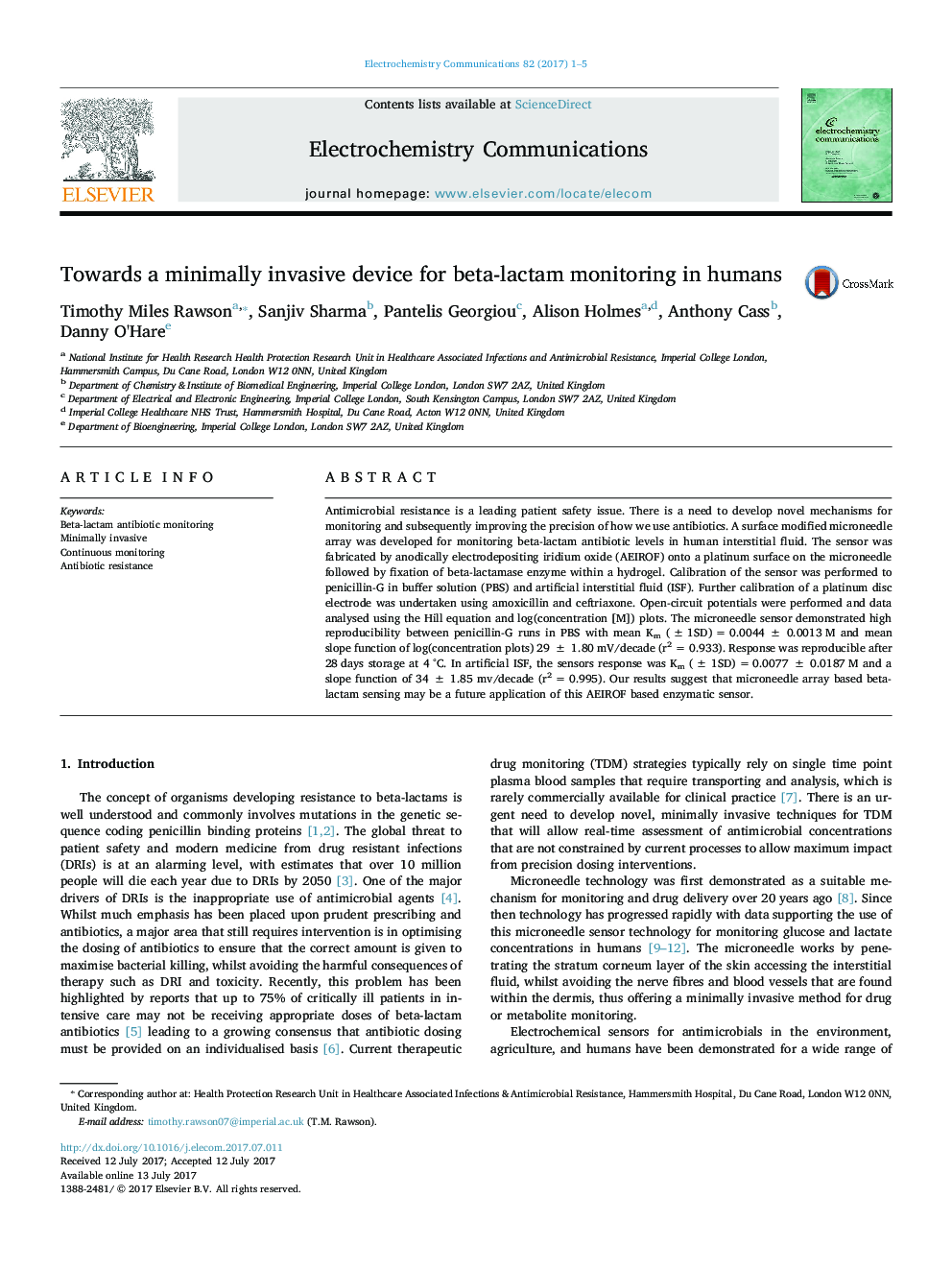| Article ID | Journal | Published Year | Pages | File Type |
|---|---|---|---|---|
| 6469550 | Electrochemistry Communications | 2017 | 5 Pages |
â¢A microneedle array for interstitial antimicrobial sensingâ¢High reproducibility in responseâ¢Consistent responses up to 28 post fabricationâ¢Sensitivity to changing antimicrobial levels as in physiological interstitial fluid
Antimicrobial resistance is a leading patient safety issue. There is a need to develop novel mechanisms for monitoring and subsequently improving the precision of how we use antibiotics. A surface modified microneedle array was developed for monitoring beta-lactam antibiotic levels in human interstitial fluid. The sensor was fabricated by anodically electrodepositing iridium oxide (AEIROF) onto a platinum surface on the microneedle followed by fixation of beta-lactamase enzyme within a hydrogel. Calibration of the sensor was performed to penicillin-G in buffer solution (PBS) and artificial interstitial fluid (ISF). Further calibration of a platinum disc electrode was undertaken using amoxicillin and ceftriaxone. Open-circuit potentials were performed and data analysed using the Hill equation and log(concentration [M]) plots. The microneedle sensor demonstrated high reproducibility between penicillin-G runs in PBS with mean Km (± 1SD) = 0.0044 ± 0.0013 M and mean slope function of log(concentration plots) 29 ± 1.80 mV/decade (r2 = 0.933). Response was reproducible after 28 days storage at 4 °C. In artificial ISF, the sensors response was Km (± 1SD) = 0.0077 ± 0.0187 M and a slope function of 34 ± 1.85 mv/decade (r2 = 0.995). Our results suggest that microneedle array based beta-lactam sensing may be a future application of this AEIROF based enzymatic sensor.
Graphical abstractDownload high-res image (74KB)Download full-size image
